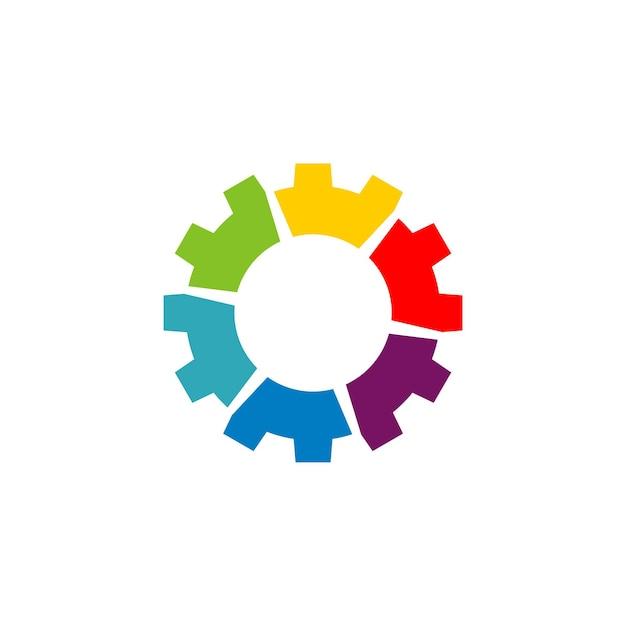Are you struggling with managing your data effectively? If so, you’re not alone. Data management can be a daunting task, especially when you’re dealing with large data sets. But, fear not! The Unity Data Catalog is here to save the day.
So, what exactly is a Unity Data Catalog? Simply put, it’s an open-source project built by Databricks that provides a structured metadata layer for unified data management. It’s designed to make it easier for you to discover, understand, and collaborate on your organization’s data.
But, how is Unity Data Catalog different from Hive Metastore? Unity Data Catalog provides additional features like support for complex data types and object-level access control. Plus, it’s easier to use and more user-friendly.
Ready to get started with Unity Data Catalog? Creating a catalog is easy. Just follow a few simple steps, and you’ll be on your way to a well-managed data environment.
But the real power of Unity Data Catalog lies in its data object hierarchy. It allows you to organize your data in a logical and meaningful way, so you can quickly and easily find what you need. No more combing through multiple data sources or struggling to remember where a specific dataset is stored.
In this comprehensive guide, we’ll take a deep dive into Unity Data Catalog and explore its features and benefits. From understanding what a Unity catalog is to creating one and managing data with it, we’ve got you covered. So, sit back, relax, and let’s get started!
The Importance of Unity Data Catalog in Data Management
In today’s data-driven world, managing data can be a daunting task for any organization. There is a colossal amount of data to manage, and it’s crucial to keep it organized and accessible for decision-making. This is where Unity Data Catalog comes in handy.
What is Unity Data Catalog
Unity Data Catalog is a powerful tool for data discovery, organization, and collaboration. It provides a centralized platform for managing data and makes it easier to find relevant data quickly. The Unity Data Catalog enables organizations to create a searchable inventory of their data assets and makes it easy to track data lineage.
Key Features of Unity Data Catalog
Unity Data Catalog has several key features that make it a valuable asset in data management. Some of the standout features include:
Data Discovery
Unity Data Catalog helps organizations with data discovery by enabling easy search and filtering of data assets. This makes it easier for teams to find the right data quickly and make data-driven decisions.
Data Lineage Tracking
Unity Data Catalog enables organizations to track data lineage and view the relationships between data assets. This helps to ensure data accuracy and integrity by providing a complete view of the data flow.
Collaborative Data Management
Unity Data Catalog makes it easy for teams to collaborate on data management tasks. It provides a platform for sharing data assets, adding comments, and collaborating on data governance.
Data Governance
Unity Data Catalog helps organizations with data governance by providing a centralized platform for managing data policies and standards. It makes it easier to ensure that data is handled in accordance with regulatory requirements and company policies.
Benefits of Unity Data Catalog
The Unity Data Catalog provides several benefits to organizations, including:
Improved Data Quality
Unity Data Catalog helps to improve data quality by providing a complete view of the data lineage and relationships between data assets. This helps to ensure data accuracy and integrity.
Time Savings
The Unity Data Catalog saves time by enabling easy data discovery and collaboration. This means that teams spend less time searching for data and more time making data-driven decisions.
Reduced Risk
Unity Data Catalog reduces the risk of data breaches and compliance issues by providing a platform for managing data policies and standards. It makes it easier to ensure that data is handled in accordance with regulatory requirements and company policies.
In conclusion, Unity Data Catalog is a valuable tool for any organization looking to improve their data management capabilities. The benefits of using it are numerous, including improved data quality, time savings, and reduced risk. Implementing Unity Data Catalog can help organizations take their data management to the next level and make better data-driven decisions.
What is a Unity Catalog
If you are new to the world of data management, you may be wondering what a unity catalog is. Simply put, a unity catalog is a centralized repository of all the data assets within an organization. The catalog indexes and organizes the data, making it easily searchable and accessible to authorized users.
The Purpose of a Unity Catalog
The primary purpose of a unity catalog is to help organizations manage their data more efficiently. Rather than having data scattered across different systems and platforms, a unity catalog provides a single view of all data assets. This makes it easier for organizations to find and use their data, increase collaboration, and improve data governance.
Benefits of a Unity Catalog
A unity catalog offers several benefits to organizations, including:
- Improved data discovery and accessibility: With a centralized catalog, users can easily locate and access the data they need, saving time and improving productivity.
- Better collaboration: A unity catalog allows teams to work together more effectively by providing a common understanding of the data they are working with.
- Increased data quality: Since a unity catalog indexes all data assets, it’s easier to identify and eliminate duplicate or obsolete data, improving data quality.
- Enhanced governance: A unity catalog provides organizations with a single source of truth for their data assets, helping them ensure compliance with data regulations and policies.

Key Features of a Unity Catalog
Typically, a unity catalog will have several key features that make it easier to manage and organize data, such as:
- Search and discovery: A powerful search engine that allows users to quickly find the data they need.
- Data lineage: The ability to track the history of data assets and understand how they are used within an organization.
- Metadata management: The ability to add, edit, and manage metadata for data assets within the catalog.
- Access control: Role-based access control to ensure that only authorized users have access to sensitive data.
- Integration with other systems: The ability to integrate with other data management systems and tools to ensure a seamless data management experience.
In conclusion, a unity catalog is a critical component of modern data management. It provides organizations with a centralized repository for their data assets, making it easier to manage, organize, and govern their data. If you are looking to improve your organization’s data management practices, a unity catalog may be just what you need.
Databricks Unity Catalog
For those who are not familiar with data catalogs, it is essential to note that it plays a crucial role in managing an organization’s data assets. It provides a comprehensive inventory of data assets, their locations, and their formats. In recent years, data catalogs have become increasingly popular with data scientists and analysts.
One of the most popular data catalogs in the market is the Databricks Unity Catalog. It is a unified data catalog that offers a streamlined approach to managing metadata across a wide range of data sources. Databricks Unity Catalog provides a centralized location for managing all data assets, including databases, data warehouses, and data lakes.
What is Databricks Unity Catalog
Databricks Unity Catalog is a data catalog built for big data environments. It provides a metadata service, which allows you to manage and track metadata across various data sources. Databricks Unity Catalog can integrate with various data sources such as Hive Metastore, Amazon S3, Redshift, and Snowflake. By doing this, it provides a unified view of all the metadata across different data sources.
Features of Databricks Unity Catalog
Databricks Unity Catalog provides several features that make managing metadata easy and efficient. Some of these features include:
- Unified Metadata Management: Provides a unified view of metadata across various data sources.
- Data Lineage: Offers end-to-end lineage tracking of data, making it easy to trace data back to its origin.
- Collaboration: Allows users to collaborate on metadata by commenting and sharing metadata.
- Data Discoverability: Makes it easy to find data by providing search capabilities.
- Data Security: Provides granular data access control for secure data sharing.
How Databricks Unity Catalog Works
Databricks Unity Catalog works by collecting metadata from various data sources and storing it in a centralized location called a metastore. The metastore contains metadata information such as table names, column names, and data types. This metadata is used by Databricks Unity Catalog to provide a unified view of metadata across various data sources.
The process of collecting metadata involves crawling the data sources to collect metadata. This process involves the use of machine learning algorithms that help in data classification and identification. Once the metadata is collected, it is stored in the central metastore.
Databricks Unity Catalog is an essential tool for managing metadata across a wide range of data sources. It provides a centralized location for managing metadata, making it easy to track and trace data. With its unified view of metadata, users can easily find data and apply granular data access controls for secure data sharing.
Unity Data Catalog vs. Hive Metastore
Unity Data Catalog and Hive Metastore are two popular data management tools used today. Although their functions may overlap, there are significant differences between them. In this subsection, we’ll explore Unity Data Catalog vs. Hive Metastore.
What is Unity Data Catalog
Unity Data Catalog is a data management tool designed to make data discovery and analysis easy. It provides a central place for users to search and find data assets within an organization. Unity Data Catalog accomplishes this by cataloging data assets and their metadata across multiple data sources. Unity Data Catalog also provides an intuitive user interface for browsing data assets.
What is Hive Metastore
Hive Metastore is a central repository for metadata associated with Hive tables. It enables easy sharing of metadata across the Hive ecosystem. By storing metadata in a centralized location, it makes it easier to keep track of where data is located and how it is organized. Hive Metastore provides users with a common interface to access metadata across multiple data sources.
Unity Data Catalog vs. Hive Metastore
Although both Unity Data Catalog and Hive Metastore provide metadata management capabilities, there are some distinct differences between them. Unity Data Catalog is a more comprehensive data management tool, while Hive Metastore is focused on managing metadata specifically for the Hive ecosystem.
Unity Data Catalog provides a more user-friendly interface, making data discovery and analysis more accessible to non-technical users. On the other hand, Hive Metastore is geared towards data engineers and analysts who are already familiar with the Hive ecosystem.
Another key difference is in their support for data sources. Unity Data Catalog supports a wider range of data sources compared to Hive Metastore, making it more versatile for organizations with diverse data environments.
In conclusion, Unity Data Catalog and Hive Metastore are both excellent data management tools used in organizations today. While both tools have overlaps in their functions, they serve different purposes, with Unity Data Catalog being a more comprehensive data management tool and Hive Metastore focusing on metadata management within the Hive ecosystem. Understanding the differences between the two tools can help organizations make informed decisions on which one to use.
How to Create a Catalog in Unity
If you’re looking to create a catalog in Unity, you’ll want to follow these simple steps to ensure the process goes smoothly.
1. Determine the Type of Catalog You Need
The first step in creating a catalog in Unity is to determine what type of catalog you need. Do you need a catalog for a specific type of content, such as audio files or 3D models? Or do you need a more general catalog that includes a variety of content? Once you’ve determined the type of catalog you need, you can move on to the next step.
2. Organize Your Content
Once you’ve determined the type of catalog you need, you’ll want to organize your content. This means identifying all of the content that you want to include in your catalog and grouping it into logical categories. For example, if you’re creating a catalog for audio files, you might want to group your files by genre or type.
3. Choose a Catalog Solution
Next, you’ll want to choose a catalog solution. There are a variety of options available, ranging from open-source solutions like Apache Atlas to commercial offerings like Alation and Informatica. Be sure to choose a solution that meets your needs and budget.
4. Set Up Your Catalog
Once you’ve selected your catalog solution, you’ll need to set it up. This may involve installing software, configuring settings, and integrating your content into the catalog. Be sure to follow the instructions provided by your chosen catalog solution carefully.
5. Import Your Content
After your catalog is set up, you’ll need to import your content. This means adding your audio files, models, or other content to the catalog. Again, be sure to follow the instructions provided by your catalog solution carefully.
6. Test Your Catalog
Finally, you’ll want to test your catalog. This means verifying that all of your content is present and that it’s organized correctly. You’ll also want to test the search functionality to ensure that users can find the content they’re looking for.
By following these six steps, you can create a catalog in Unity that effectively organizes and manages your content. Good luck!
Unity Catalog Data Object Hierarchy
When working with Unity Data Catalog, it is essential to understand the underlying hierarchy of the catalog’s data objects. This hierarchy is instrumental in organizing and managing your data assets effectively. In this section, we will delve into the various types of data objects in Unity Data Catalog and explain how they fit into the catalog’s object hierarchy.
Catalog
The highest-level entity in the Unity Data Catalog object hierarchy is the catalog. A single Unity Data Catalog instance can contain multiple catalogs, each representing a logical grouping of data assets. For example, you might have one catalog for all marketing-related data and another for financial data.
Schema
Inside each catalog, you have schemas. A schema is essentially a namespace that contains a set of related data assets. You can organize your data into schemas based on logical groupings and access control policies. Within each schema, you might have tables, data flows, and data pipelines.
Asset
An asset is a piece of data (e.g., a file, a database table, an API endpoint) that you want to track and manage in Unity Data Catalog. When you add an asset to your catalog, you provide information about its schema, name, and description. Assets can be of different types, depending on their underlying data source. Unity Data Catalog supports various asset types, including files, databases, and cloud applications.
Data Flow
A data flow is a set of data manipulation operations that extract data from a source, transform it in some way, and then load it into a destination. You can create data flows in Unity Data Catalog using a drag-and-drop interface, allowing you to build complex data pipelines quickly. Data flows can be used to move data between different systems, integrate data from multiple sources, or aggregate and summarize data for reporting.
Data Pipeline
A data pipeline is a series of interconnected data flows that perform a specific data processing task. You can think of a data pipeline as a manufacturing assembly line, where each data flow is a step in the process. Unity Data Catalog supports robust data pipeline automation, allowing you to create complex workflows that run on a schedule or in response to specific events.
In conclusion, understanding the Unity Data Catalog object hierarchy is essential for effective data asset management. By organizing your assets into catalogs, schemas, and data objects, you can improve data governance, reduce data redundancy, and increase data asset reuse. With Unity Data Catalog, you can create robust data pipelines and workflows that enable data-driven decision-making in your organization.


